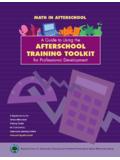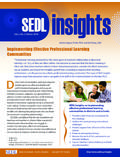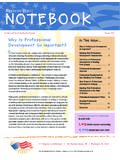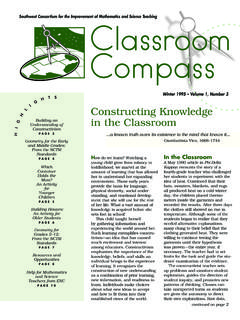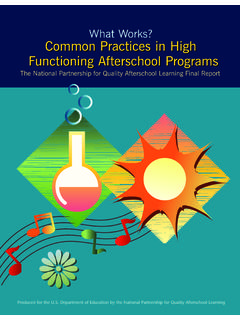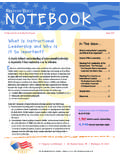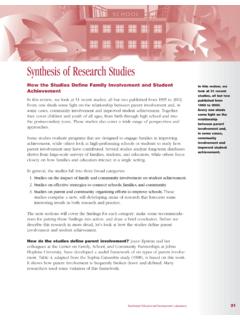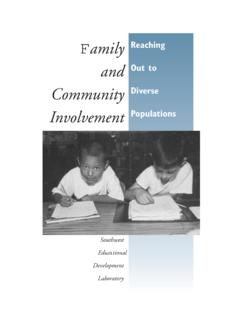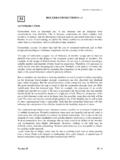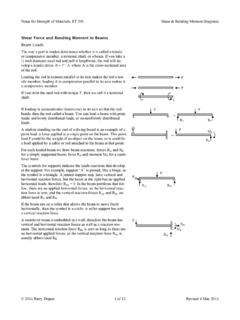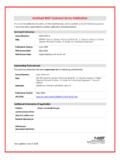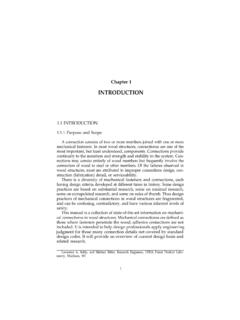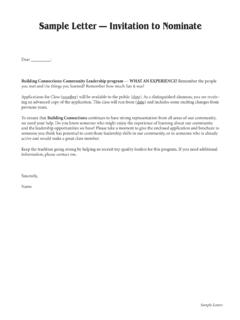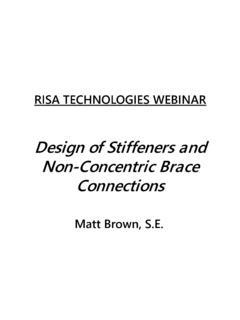Transcription of The School-Family Connection: Looking at the …
1 Th e S ch oo l-Fa mi l y C on n ec ti o n : L ook i n g a t th e La rg e r P i c tu re A Review of Current Literature R ev ie w P r e p a r ed b y Ch r is F er g u s o n , P r o g r a m A s s oc i a t e w it h c on tr ib u t i on s f r o m M a n ic a R a m os , Z en a R u d o, a n d L a c y Wo od June 16, 2008 N a ti on al Center for Fa mi l y an d Com mu n i ty Con n ecti on s w i th S ch ool s 4700 Mueller Blvd., Austin, TX 78723 | 800-476-6861 National Center for family and Community Connections with Schools at S E DL | 800-476-6861 | T h e S ch ool-Fa mi l y Con n ecti on : L ook i ng a t th e L a r g er P i ctu r e A Review of Current Literature Educators as well as noneducators often question the value of family involvement. Does it really make a difference? According to the research, the answer is yes. Sometimes, results come in more traditional measures student achievement, attendance, or These measures tend to be based in schools and controlled by school staff.
2 At other times, there are less traditional benefits, such as improved student or family self-efficacy about education, higher expectations for students or others involved in efforts, more effective ways to support family engagement, greater understanding of the viewpoints of others, or student planning for the future:2 These measures may be driven by the school , the home, the community, families, or students. The key is not that the source of additional student support comes from a specific entity, but that students benefit significantly when there is an individual encouraging and expecting the child to be academically successful. In fact, there is evidence that it is not the parent that makes the difference, but instead it is adults who take the time to talk to students, express an interest in their education, and hold them accountable for Students of all ages benefit academically, emotionally, and physically when an adult is actively involved in the day-to-day events of their lives, including school While the less traditional measures seem less important at first glance based on this finding, there is a direct link between the two types of measures.
3 Both contribute to the academic success of children. When family members commonly engage with teachers or other school staff, students adjust more easily to classroom activities and their teachers at both the elementary and secondary levels, resulting in 1 Blank, Berg, & Melaville (2006); Center for Mental Health in Schools (2005a); Corcoran & Christman (2002); Darling-Hammond, Hightower, Husbands, Lafors, Young, & Christopher (2003); Datnow, Lasky, Stringfield, & Teddlie, (2005); Dearing, Kreider, Simpkins, & Weiss (2007); Duchesne & Larose (2007); Glick & Hohmnn (2007); Herbert, Murphy, Ramos, Vaden-Kiernan, & Buttram (2006); Hui, Buttram, Deviney, Murphy, & Ramos (2004); Kim & Crasco (2006); National Center for Education Accountability (2002); Phillipson & Phillipson (2007); Quiocho & Daoud (2006); Shannon & Bylsma (2004); Sheldon (2007); Togneri & Anderson (2003) 2 Auerbach (2007).
4 Burrueco, L pez, & Miles (2007); Duchesne & Larose (2007); Fauth, Leventhal, & Brooks-Gunn (2007); Glick & Hohmnn (2007); Junttila, Vauras, & Laakkonen (2007); Pomerantz, Moorman, & Litwack (2007); Weiss, Mayer, Kreider, Vaughan, Dearing, Hencke & Pinto (2007) 3 Beier, Rosenfeld, Spitalny, Zansky, & Botempo (2000); Duchesne & Larose (2007); Fauth, Leventhal, & Brooks-Gunn (2007); Frisco, Muller, & Frank (2007); Hall (2007); Junttila, Vauras, & Laakkonen (2007) 4 Beier, Rosenfeld, Spitalny, Zansky, & Botempo (2000) The School-Family connection : Looking at the Larger Picture, A Review of Current Literature National Center for family and Community Connections with Schools at S E DL | 800-476-6861 | Page 3 improved student In fact, even when family involvement is described as minimal or poorly structured, it still makes a difference in students daily lives and their planning for the In the words of Henderson, Mapp, Johnson, and Davis, Partnerships among schools, families, and community groups are not a luxury they are a necessity (p.)
5 1).7 Unfortunately, efforts to increase meaningful family engagement in school are often set aside no matter what the research says, waiting for a more convenient or appropriate time to address them. Moreover, the time and energy to start and support continued involvement can be daunting when considering the other demands made on school school staff direct resources to address the problems of the moment rather than building a strongly defined educational system that ensures that every child has a quality In contrast, those districts and schools that target activities and processes to give families the tools and the information they need to engage effectively in school improvement create a stronger system of education and provide additional resources for both students and school This set of studies provides greater clarity about creating partnerships among schools, families, and community groups.
6 Most importantly, these studies provide insight into the how and why of programs adopting contextually driven approaches rather than limiting efforts to those activities that are convenience to school staff, time, and facilities. When efforts are designed to meet the needs of the community setting, there is increased support for student learning and involvement from outside the For example, there are valid reasons for family members not to attend an event or engage in an activity at a particular time. In many schools, the family members who cannot attend would automatically 5 Duchesne & Larose (2007); Junttila, Vaurus & Laakkonen (2007) 6 Auerbach (2007); Glick & Haohmnn-Marrott (2007) 7 Henderson, Mapp, Johnson, & Davies (2007) 8 Ingram, Wolfe, & Lieberman (2007) 9 Cowan (2007) 10 Blank, Berg, & Melaville (2006); Caspe & Lopez (2006); Dearing, Kreider, Simpkins & Weiss (2007); Desimone, Finn-Stevenson, & Henrich (2000); Dorfman & Fisher (2002); Glick, Hohman-Marrott (2007); Lopez, Scribner, & Mahitivanchcha (2001); Pomerantz, Moorman, & Litwack, (2007); Resto & Alston (2006); Westat and Policy Studies Associates (2001); Wynn, Meyer, Richards-Shuster (2000) 11 Barajas & Ronnkvist (2007); Blank, Berg, & Melaville (2006); Caspe & Lopez (2006); Pomerantz, Moorman, & Litwack (2007); Quiocho & Daoud (2006).
7 Weiss, Mayer, Kreider, Vaughan, Dearing, Hencke, & Pinto (2007) The School-Family connection : Looking at the Larger Picture, A Review of Current Literature National Center for family and Community Connections with Schools at S E DL | 800-476-6861 | Page 4 be labeled as uncaring or uninvolved when in reality that is not the family and community networks can help to fill change this perspective and bridge the gap families and schools. 13 Getti n g Ou t of th e B ox These studies explore a wide range of family involvement programs, challenges, needs, strategies, and contexts ways to get out of the box and increase School-Family connections. There are effective family involvement programs in communities that use only the more typical forms of involvement, such as volunteering and homework help. In other communities, these same strategies are not as effective, because there are contextual issues that limit families participation.
8 These less typical situations are the focus for many of the studies in this review. When family members feel invited and believe they have the knowledge and skills to support their children s education, they will more readily engage in educational activities with their children. On the other hand, when families feel overwhelmed by requests from schools, they will resist unless there is a structure to support their efforts such as a network of family , friends, or other This document is intended to review the current literature on School-Family connections and provide both educators and noneducators with the information they need to increase meaningful family involvement and develop structures and strategies to support this work. This review includes the following: 1. An overview of new literature 2. A matrix of the trends across the studies (Appendix A) 3. An explanation of the types of research studies included in the review (Appendix B); 4.
9 Detailed descriptions of more than 30 documents that study family involvement published between 2005 and 2008 (Appendix C) 12 Anderson & Minke (2007); Auerbach (2007); Caspe & Lopez (2006); Phillipson & Phillipson (2007); Quiocho & Daoud (2006); Resto & Alston (2006); Weiss, Mayer, Krider, Vaughan, Dearing, Hencke & Pinto (2007) 13 Blank, Berg, & Melaville (2006); Pomerantz, Moorman, & Litwack (2007); Weiss, Mayer, Krieder, Vaughan, Dearing, Hencke, & Pinto (2007); Resto & Alston (2006) 14 Blank, Berg, & Melaville (2006); Pomerantz, Moorman, & Litwack (2007); Weiss, Mayer, Krieder, Vaughan, Dearing, Hencke, & Pinto (2007) The School-Family connection : Looking at the Larger Picture, A Review of Current Literature National Center for family and Community Connections with Schools at S E DL | 800-476-6861 | Page 5 5. Brief descriptions of 11 documents that study systemic school improvement that help to explain the role of family involvement in the larger scope of improvement practices (Appendix D) Although in many ways these studies reinforce previous research findings, they also provide deeper investigations of factors that bridge home to school and family member efficacy.
10 Readers also may find the source for the 11 studies on systemic school improvement Working Systemically An Approach to Maximize District, school , Classroom, and Student Performance: A Review of Research valuable as well. While this second review focuses on current research related to working systemically with districts and schools, involving families is an integral component of a systemic approach to increasing student achievement. Des cr i p ti on of S tu d y S el ecti on This review includes studies that represent a wide range of geographic settings, such as school -based and non- school -based programs; cultural and ethnic populations; institutional levels; and school grades: preschool, elementary, middle, high school , and postsecondary efforts. These family involvement resources focus on both regular and out-of- school time as well as issues related to diversity; factors that effect student academic, health, and behavioral needs; and factors that stifle or foster meaningful family involvement.

